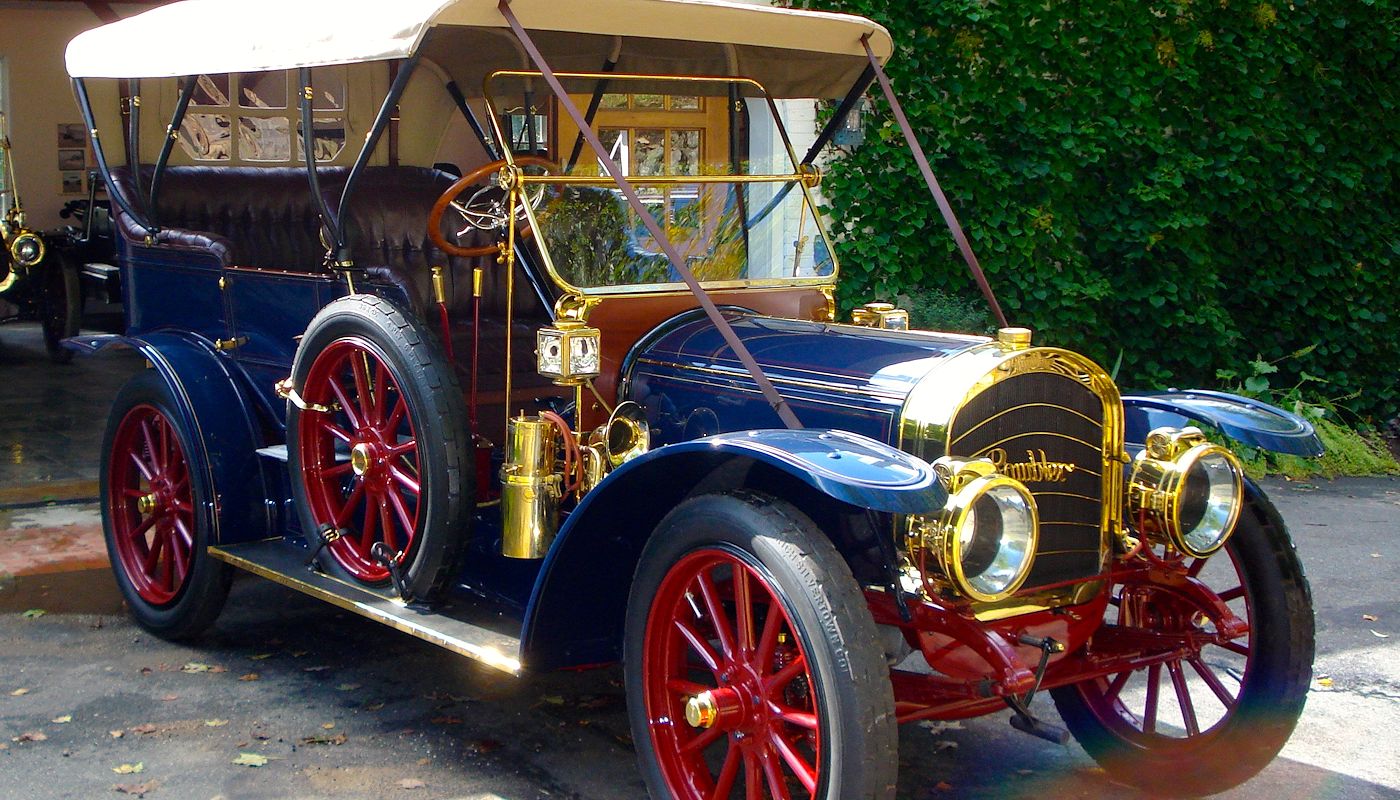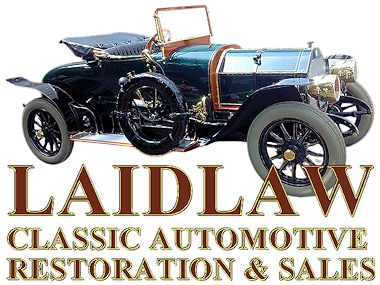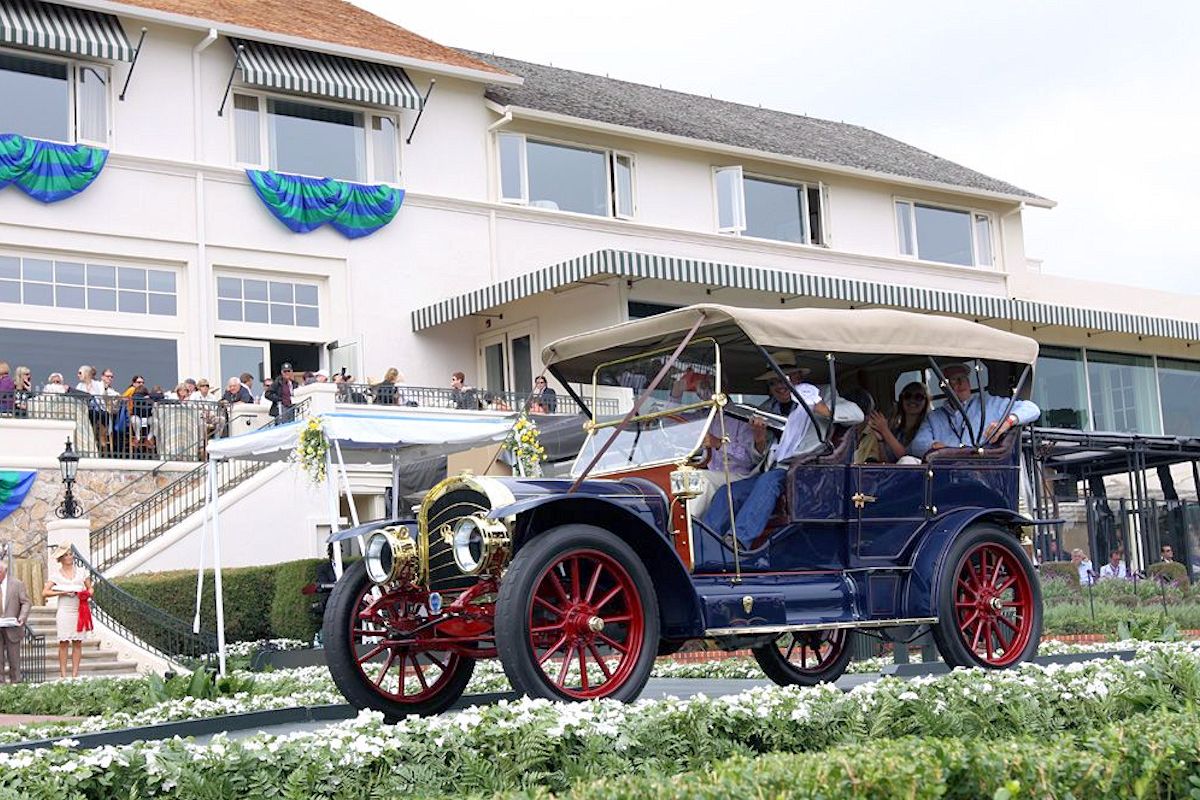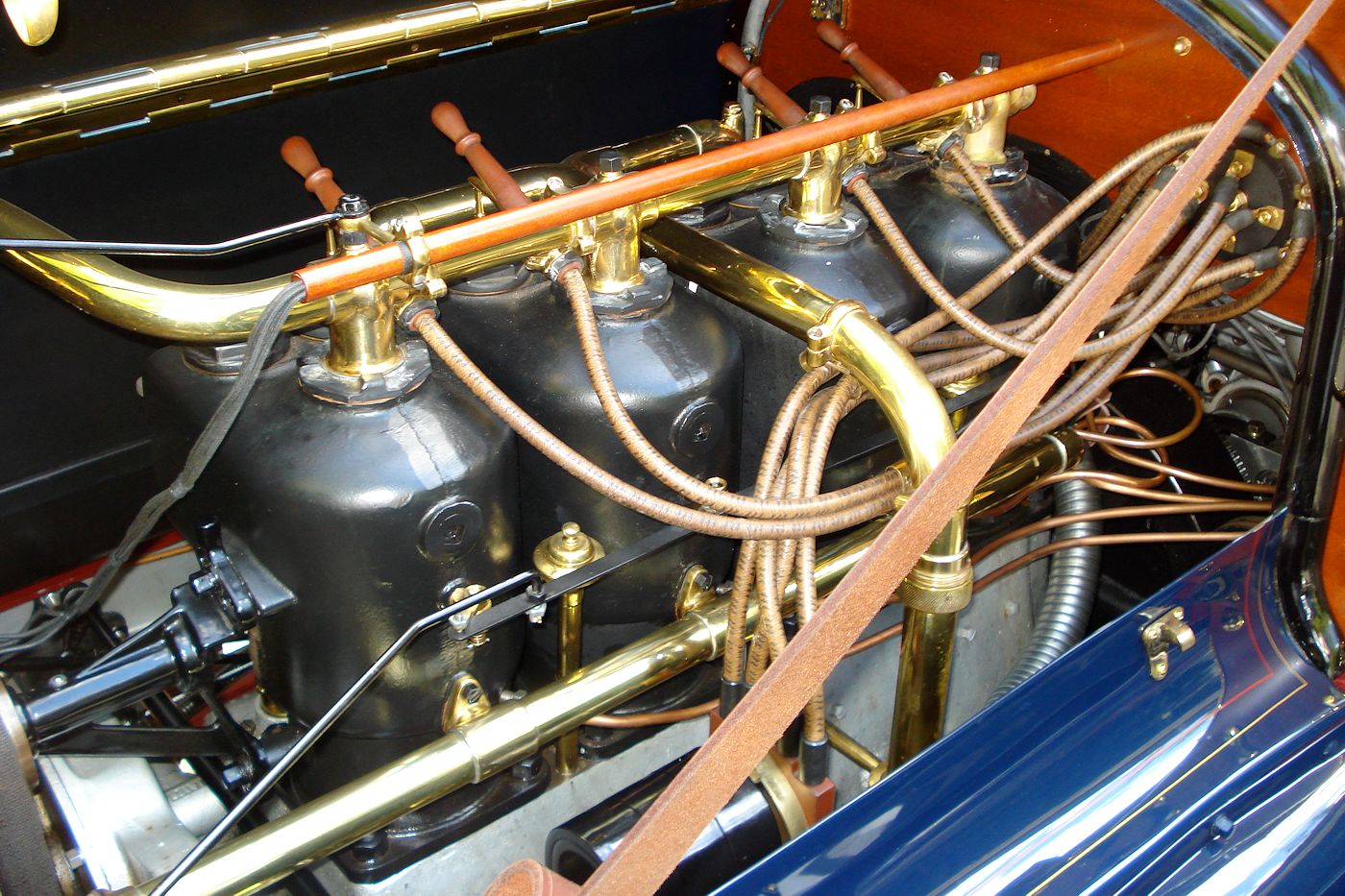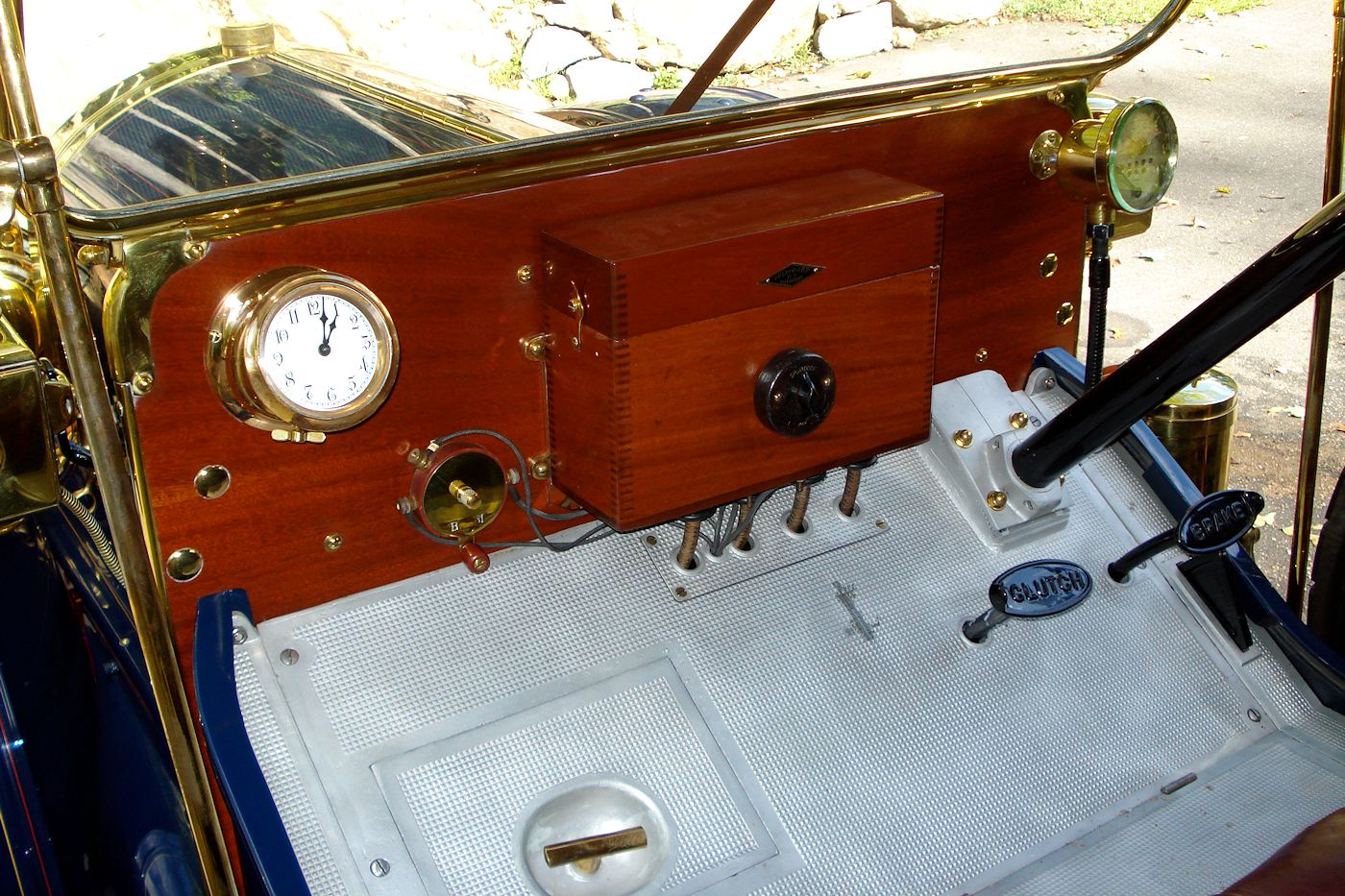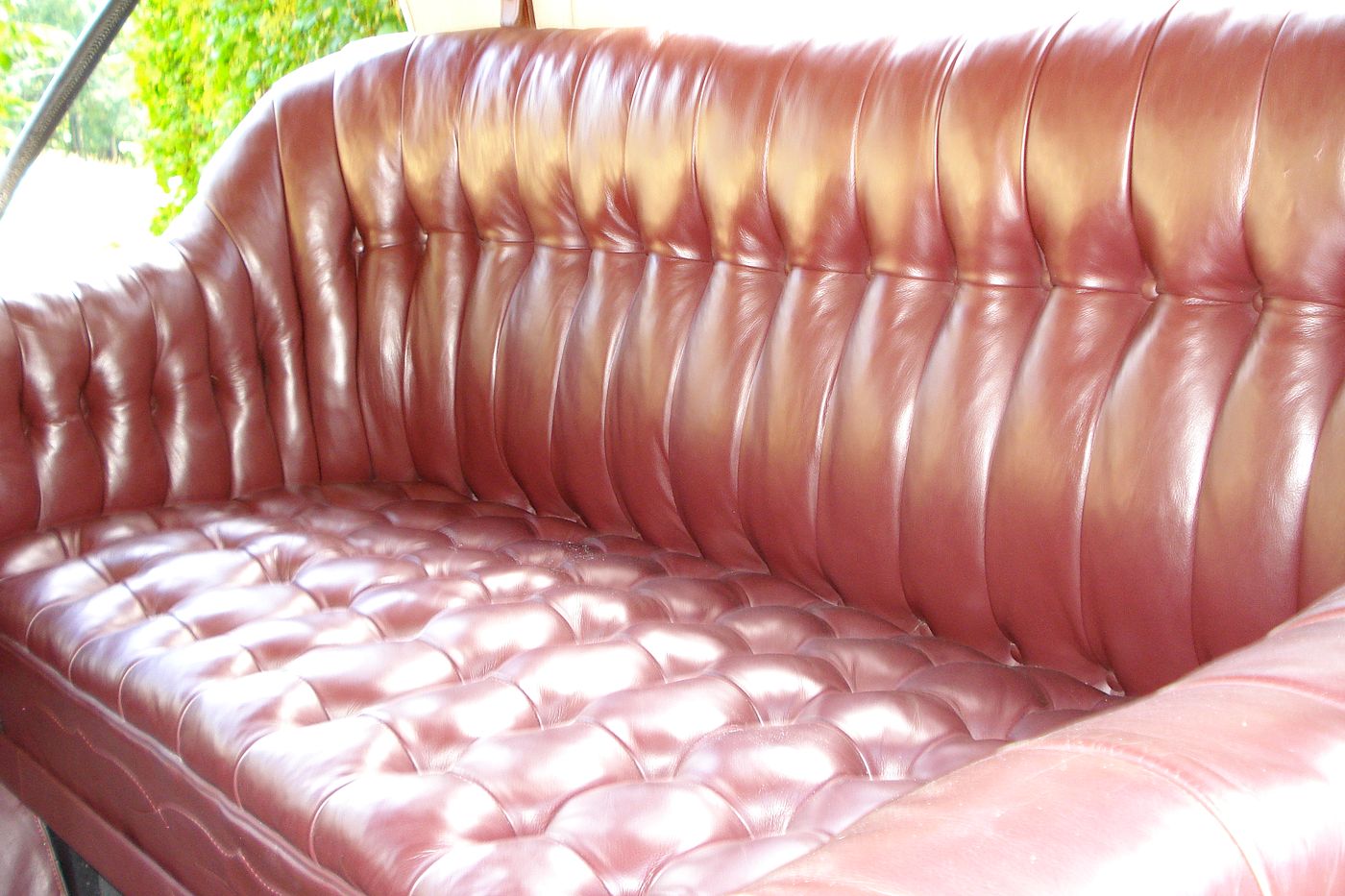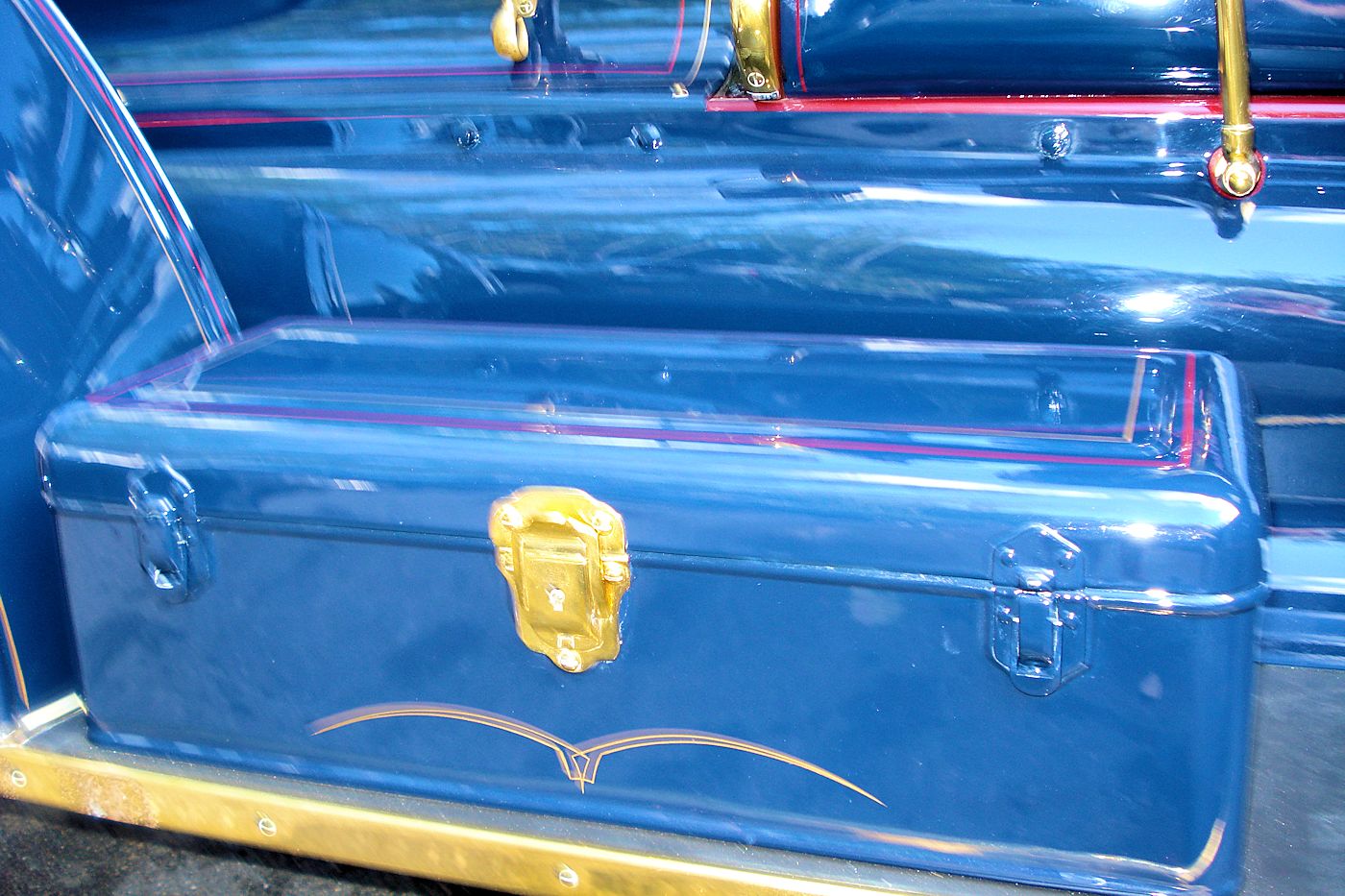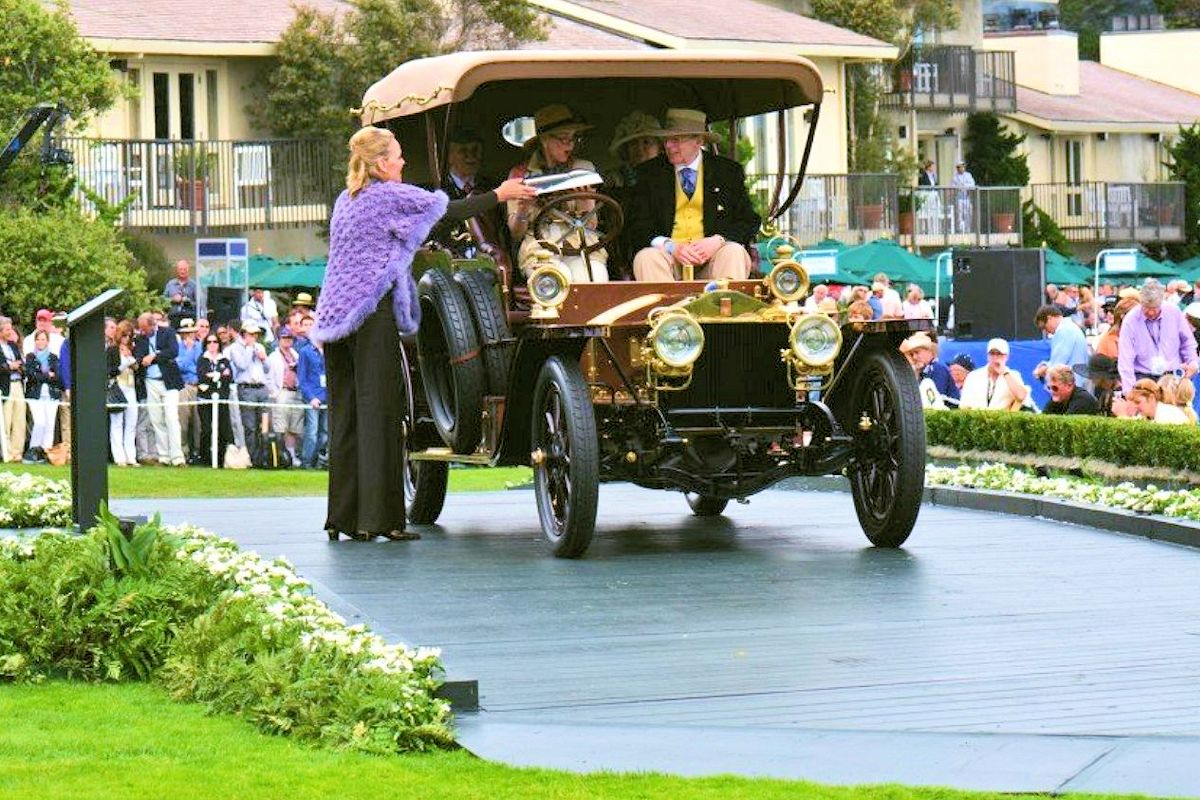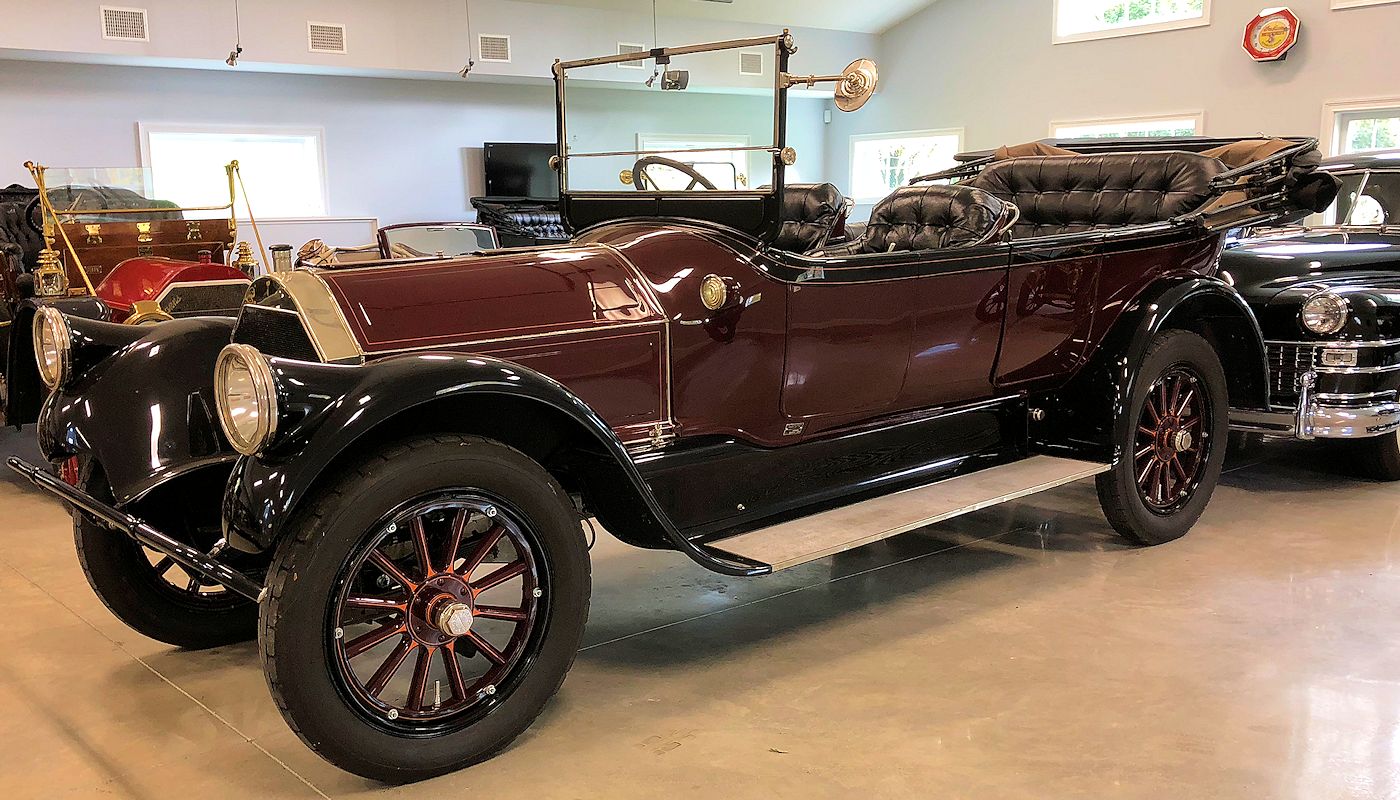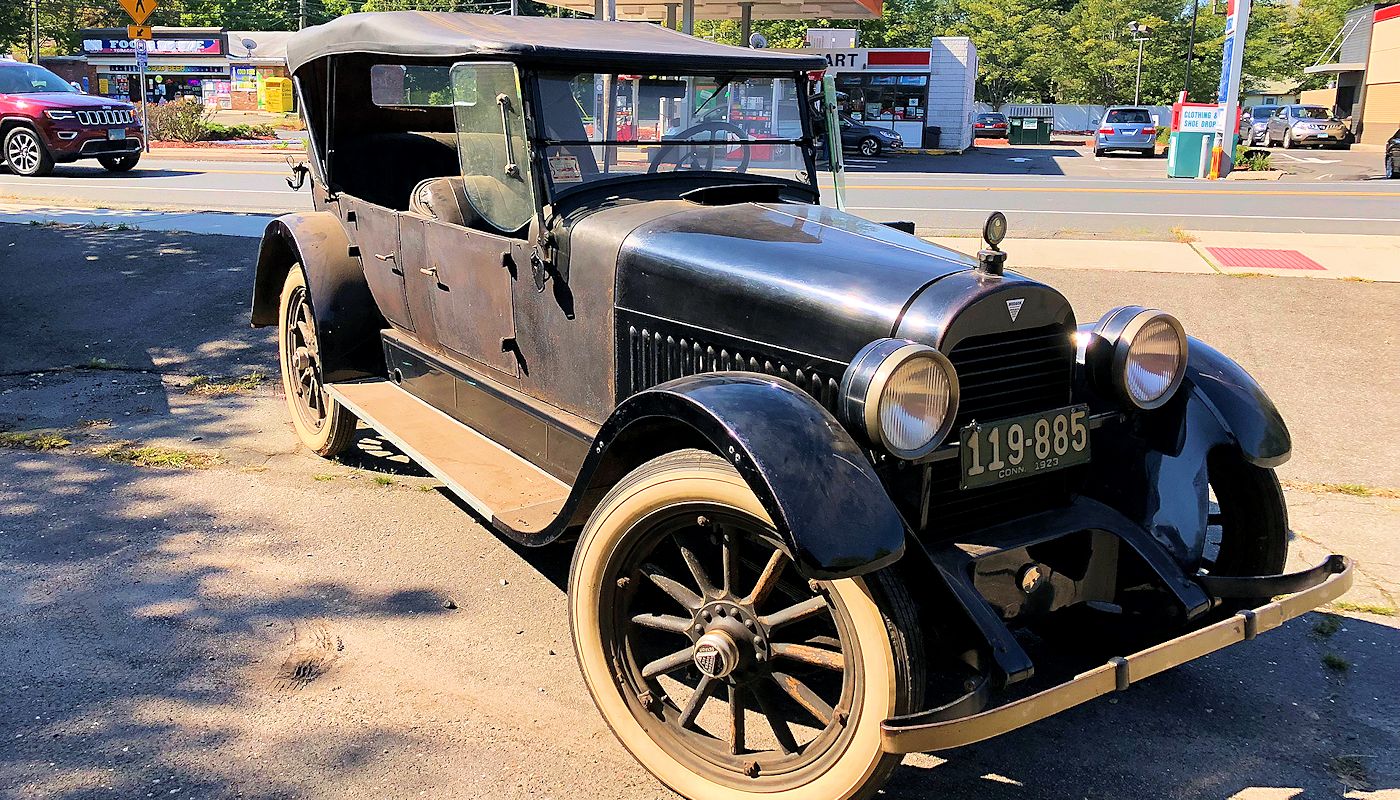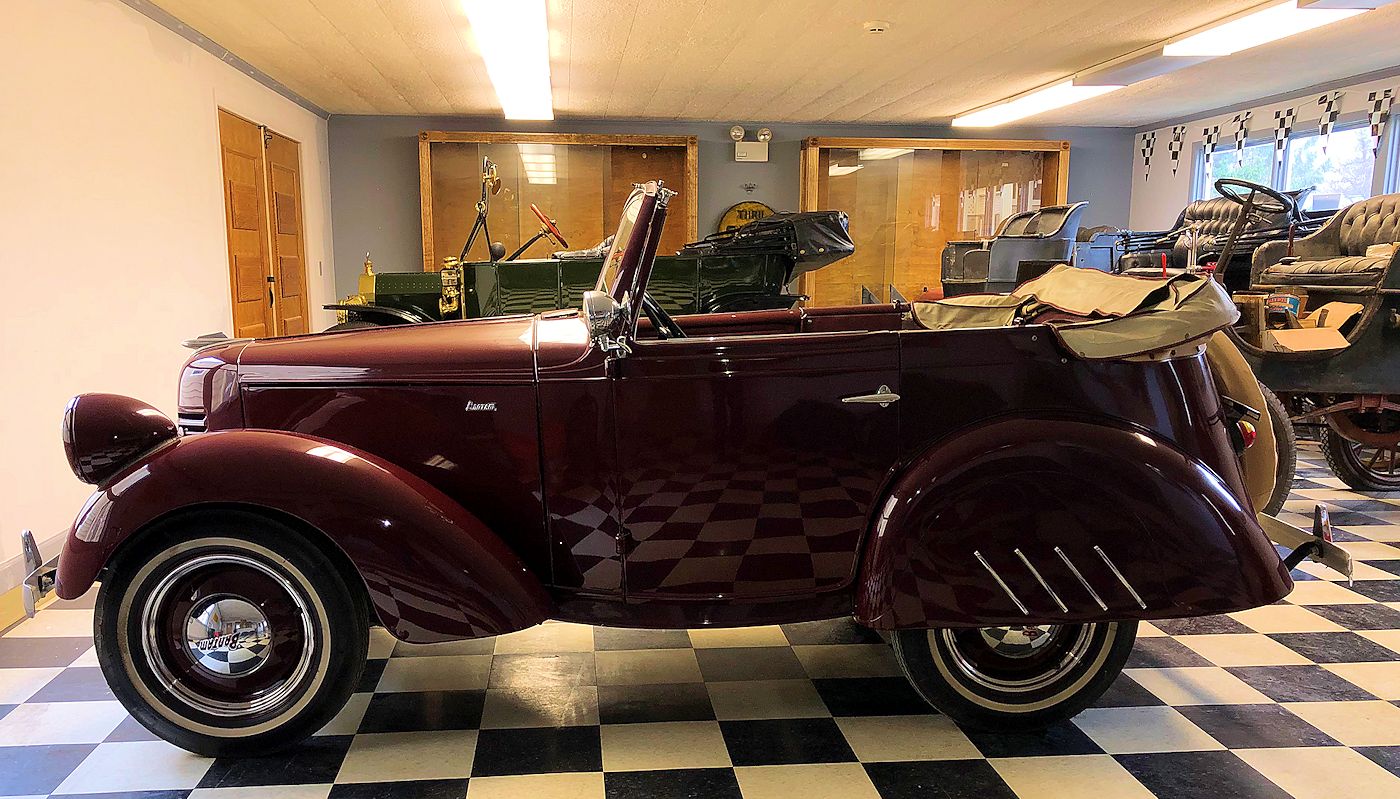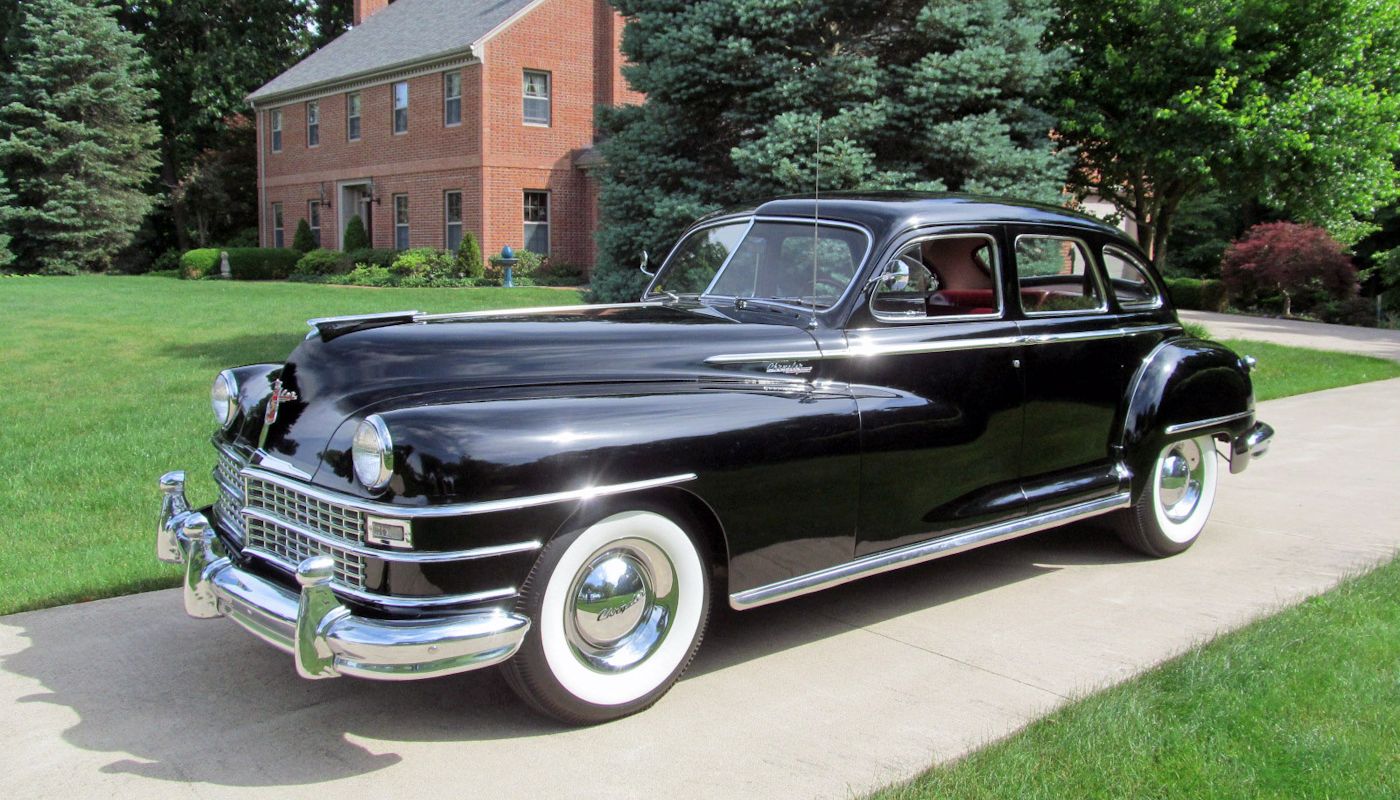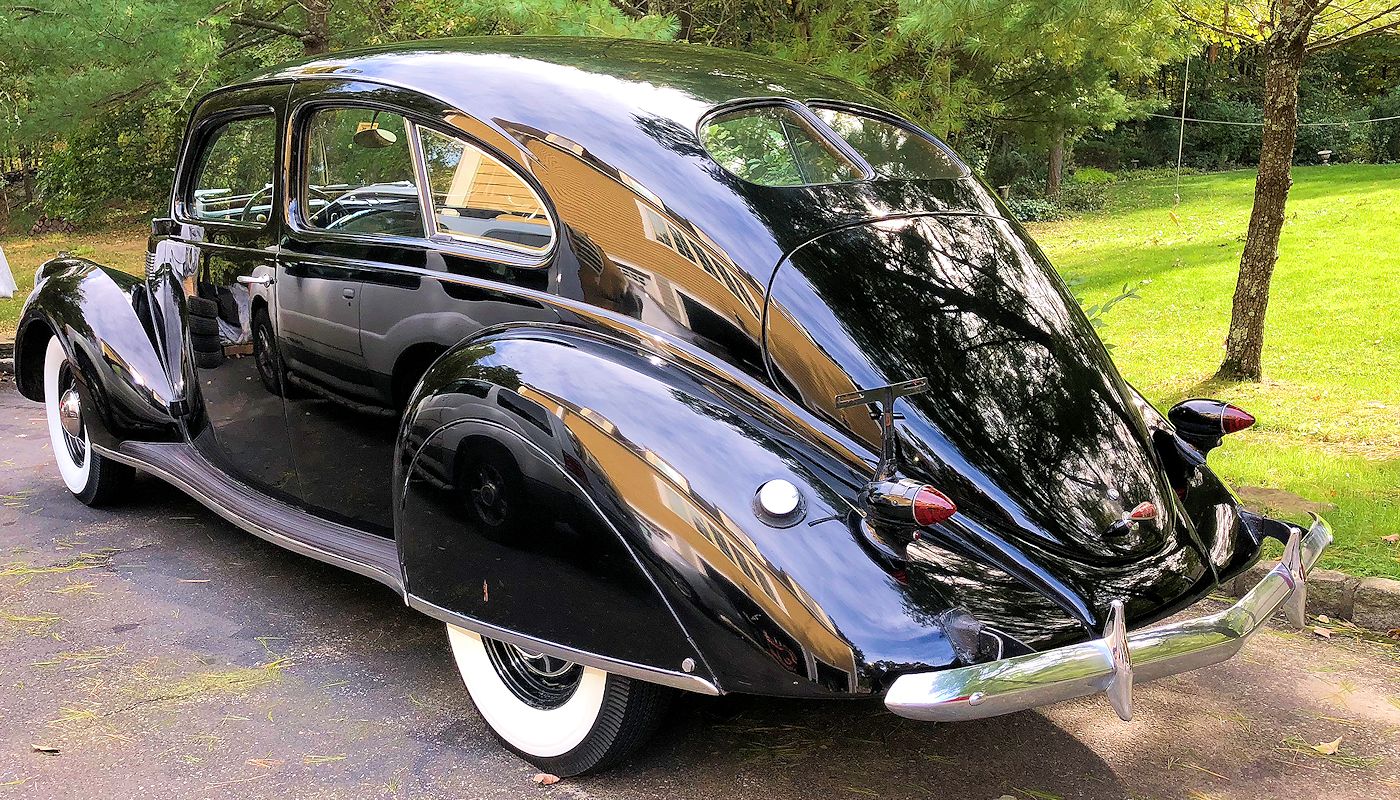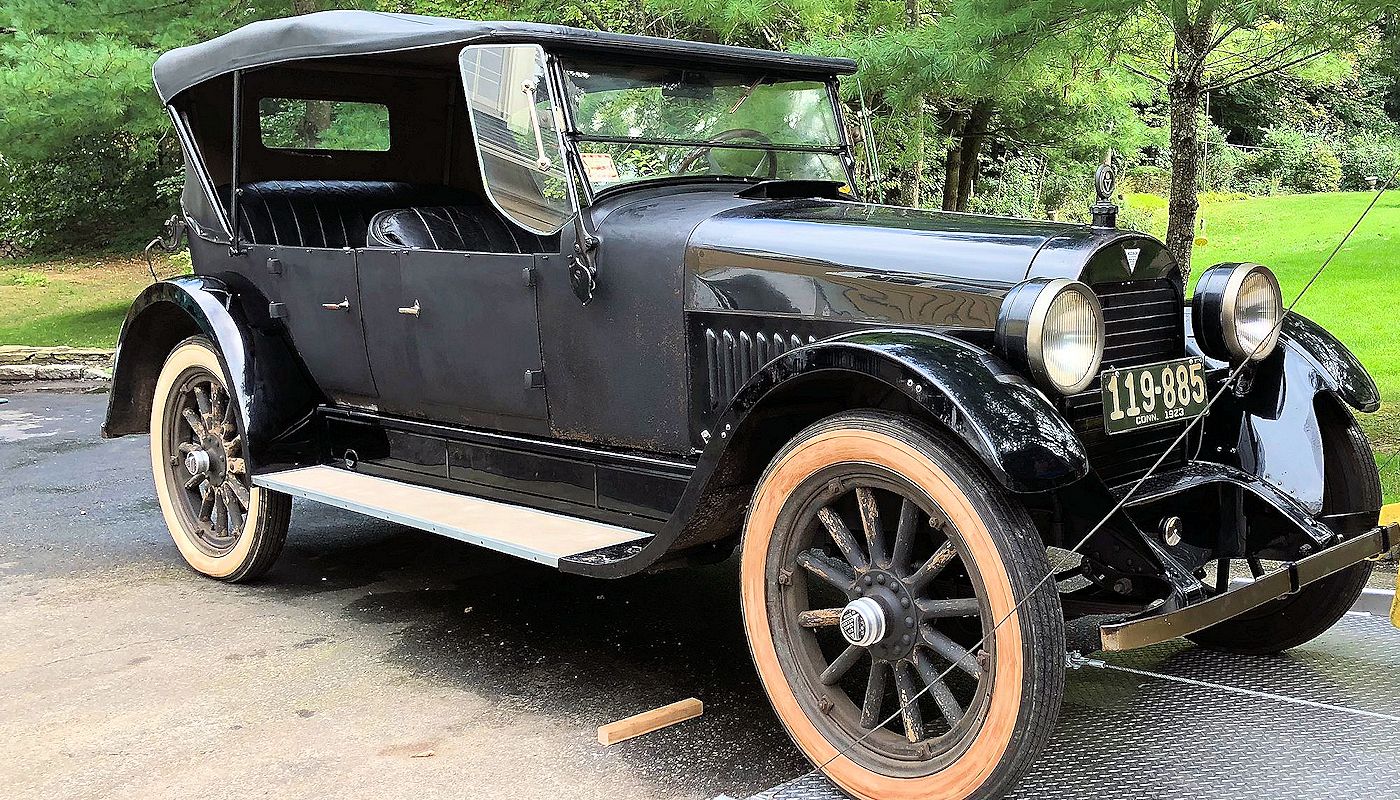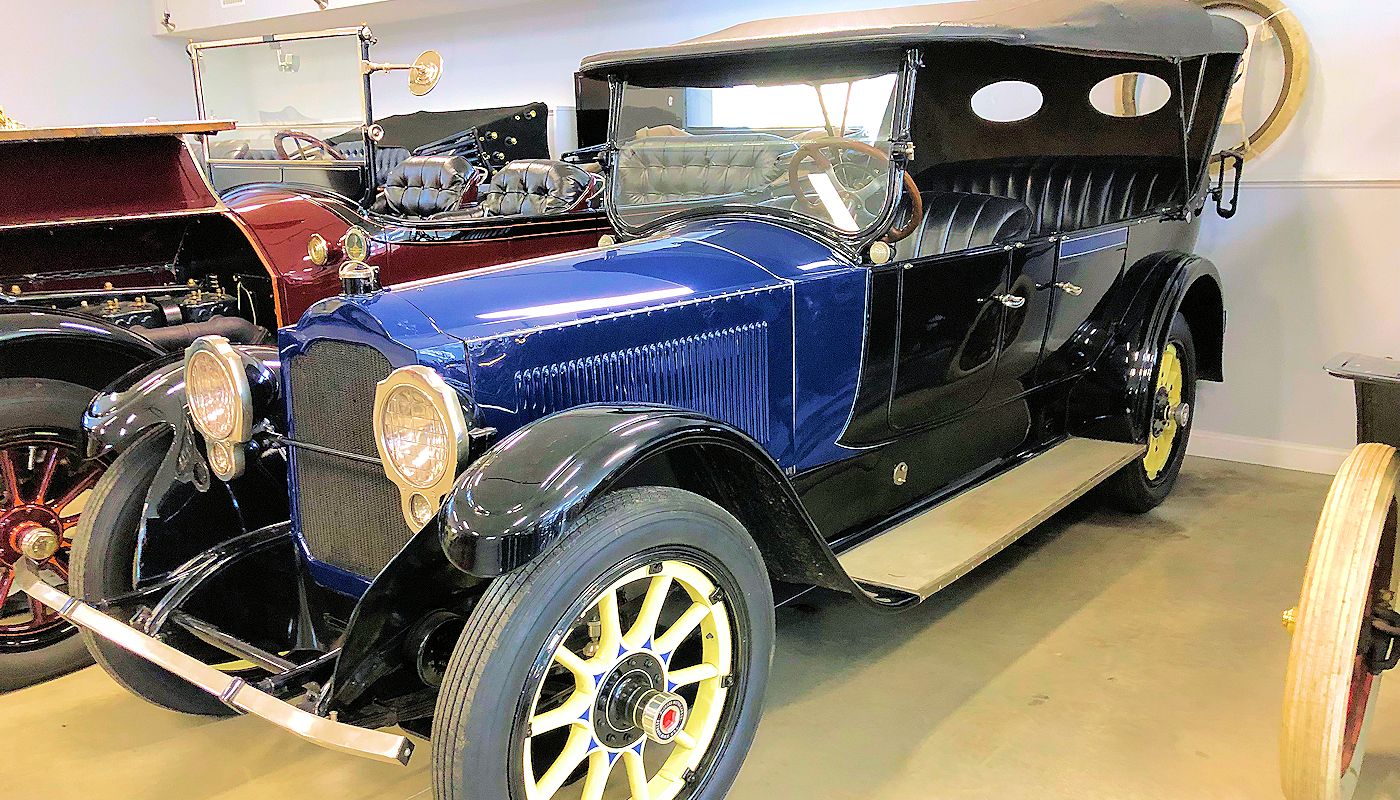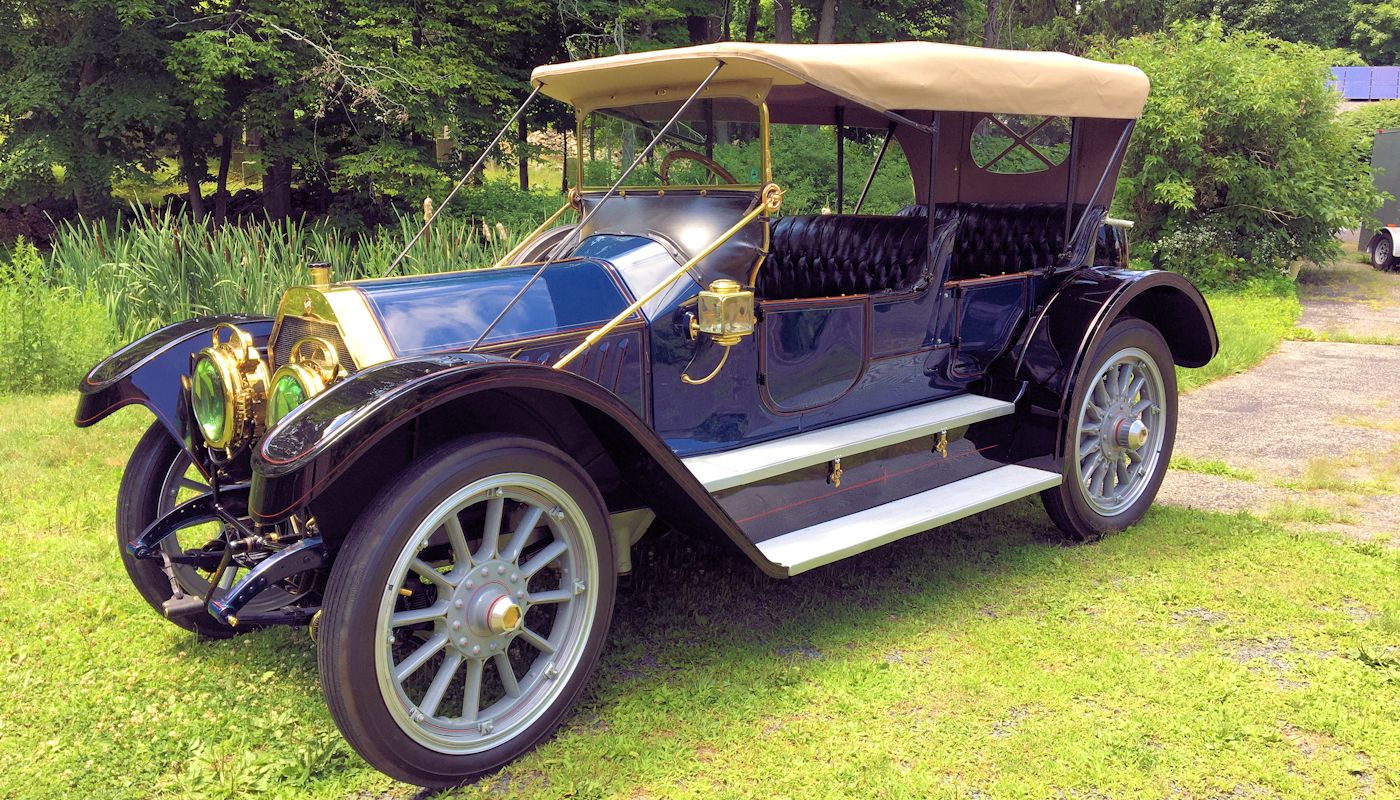The equipment of this model includes a magneto, gas lamps, a PrestOLite tank, electric side and tail lamps, and a 6 volt, 80 ampere hour storage battery. The same chassis with 5 inch tires is used for the seven passenger limousine. Model 54 is provided as a five passenger touring car or a four passenger close coupled car, and the same equipment is furnished with it as with Model 55. It is fitted with a 45 horse power engine, and has a wheel base of 117 inches and 36×4 inch wheels.
The following description applies to both Models 55 and 54
The engine is of the same type as used in Models 44 and 34 Ramblers of the past two seasons. The valves overhang all on one side and the crank shaft is offset 25 per cent, of the piston stroke. The crank case is of the barrel type with an opening 23×8 inches on the side for inspection and adjustment. A wedge type of bearing adjustable from the side, shown in the illustration, makes possible easier and more perfect adjustment from the side than can be accomplished by the bolt method. In the 1910 model the pump has been moved to a position forward of the cam gear case. This change is to provide for a more accessible magneto location. It is now located on an extension of the pump shaft just back of the cam gears. It can be very easily reached for both inspection and adjustment.
A combined shield and oil gutter attached to the crank case at the rear of the flywheel and main bearing returns all surplus oil that may work through this bearing back to the crank case. This eliminates the possibility of its dropping on to the flywheel and being thrown on to the other inechanism.
In Models 55 and 54 chassis the clutch has been changed from the cone type to the internal expanding type. This eliminates end thrust on the crank shaft, and its design is such that it exerts the greatest pressure when fully engaged. With the average clutch the spring is expanded when the clutch is engaged so that it then exerts the least instead of maximum pressure. This clutch has been very thoroughly tested on a number of different Ramblers, and it has been found to be ideal in operation. It is said to engage very gradually, hold positively, and disengage instantly. The only change in the transmission is at the roller bearing, which carries the for ward end of the main drive shaft. This is a hinged bearing with a dowel fastening, retained in a steel case, and provided with adequate means to compensate for all end thrust.
The rear axle continues of the semifloating type, but the drive shafts are larger, and a new method is used for securing the wheels. On the Rambler drive shafts the differential gear is upset on the end of the both models. The most important change is a lower position of the seats. This adds to the comfort of the passengers, and improves the appearance. More room is provided between the front seat and the pedals.
The tonneau floor is countersunk between the frame channels, providing plenty of room even with the lowered seat. Above the frame channels the tonneau is widened. In the seven passenger job ample room is provided to pass between the two extra chairs when they are occupied. These shaft, making the drive gear and axle integral. Now, the wheel end of the shaft is also upset. This enlarged end is squared and tapered for the forged wheel hub. This method of upsetting or enlarging the shaft before squaring it makes it strongest at this point, whereas otherwise the metal re moved by squaring would weaken it.
The springs are of the triple action type, but somewhat modified in design from those of last year. They are straighter, and the second leaf is longer, extending into the bend of the top leaf so as to support it. The steering continues of the screw and nut type, but the nut has been lengthened to increase the wearing surface, and a ball thrust bearing has been added with better provision for adjustment.
A neat pressed steel bracket supports the bonnet at the dash. The strap is done away with, and the bonnet is held down by convenient spring clamps. Particular at tention has been paid to the guards; they are wider, heavier, better braced, convexed both to strengthen them and improve the appearance, and their outline is much more graceful. The front guard follows the radius of the wheel, while the rear guard extends straight back with the body lines. A neat filler strip projects from nearly the top of the frame to the running board, entirely covering the running board supports.
Four of these supports are provided for the larger and wider running board now used. This board is aluminum covered. The changes in the bodies apply alike to bodies are very richly upholstered with hand buffed leather, curled hair and deep springs. Deeper springs and more and better hair are used than heretofore, add ing greatly to the riding qualities. Although Model 53 is a smaller car, it can hardly be called a small car, particularly in power. With 4^x4^ cylinders the engine delivers 34 actual horse power by dynamometer test. The wheel base is 108 inches, the wheels are 36 inches, and the tires are zxA inches. Four inch rear tires are furnished, if desired, at $20 extra. The description of Models 55 and 54, relating to the pump and magneto locations, the oil shield and gutter, transmission bearing and rear axle, applies also to this model. Practically the only other important change from its predecessor is in the rear springs. They are the full elliptic Rambler type, with involute ends. These springs have been used for two seasons on other Rambler models.
